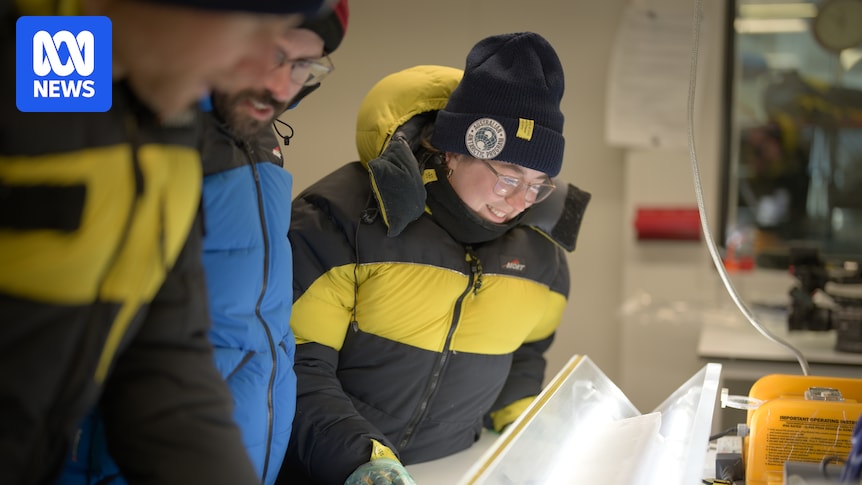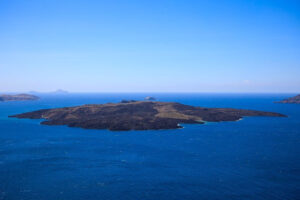
Inside a frigid laboratory in Hobart, where temperatures plunge nearly 20 degrees Celsius below zero, a team of scientists clad in thick puffer jackets embarks on a groundbreaking mission. They carefully extract a one-meter cylinder of ice from an insulated box recently transported from Antarctica. This marks the beginning of an ambitious endeavor known as the “Million Year Ice Core” project.
“In the freezer lab today, we’re cutting the first samples from the ‘Million Year Ice Core’,” explained Joel Pedro, the lead scientist from the Australian Antarctic Division. “And that’s a big moment for us.”
For nearly a decade, Dr. Pedro and his team from the Australian Antarctic Program have been planning this monumental project. The aim is to retrieve the world’s oldest continuous core of ice from deep beneath Antarctica’s frozen surface. Ice cores, often described as time capsules, provide invaluable insights into the Earth’s climate and atmospheric history, thanks to the tiny bubbles of air trapped within them over millennia.
Unlocking Earth’s Climate History
The ice currently under analysis in Hobart was extracted from a depth of 150 meters, dating back nearly 4,000 years. While this is a significant milestone, it is merely the beginning of a much larger mission. Over the coming years, the team plans to drill to a depth of 3,000 meters, potentially uncovering ice that dates back up to 2 million years.
“We’re hoping to push the climate record back well over a million years, potentially up to 2 million years,” Dr. Pedro stated.
“More than any other archive of climate in the past, [ice cores have] a range of information that helps you to understand the changes in the total climate system,” Dr. Pedro said.
The Grueling Journey to the Oldest Ice
The journey to reach this point has been a monumental logistical challenge. The drill site, known as Dome C North, is located 1,200 kilometers from the nearest Australian station in Antarctica and sits 3,000 meters above sea level, where temperatures can drop below -50 degrees Celsius.
Turning the site into a deep field station required a 10-person team using six tractors to transport nearly 600 tonnes of equipment across the frozen landscape. According to Chris Gallagher, the traverse leader from the Australian Antarctic Division, “In the Australian program, it’s the biggest traverse that we’ve undertaken.”
After enduring multiple blizzards, the team reached Dome C North 18 days after departing from Casey Station. “It’s a very specialized team that has extremely high skills, but also that ability to really get on with each other and care for each other,” Gallagher noted.
Celebrating a Milestone, Looking to the Future
Once the accommodation modules and drill shelter were established, a separate team of scientists arrived to commence drilling and processing the ice core. Chelsea Long, a field assistant, described the extraction of the first section of ice as a momentous occasion. “It was really celebratory when it came out and just finally to see this happening and to touch the ice and measure it, was a real joy,” she said.
For Dr. Pedro, this achievement was a moment to savor after years of hard work and delays caused by the COVID pandemic. “The start to the project was easily the most exciting thing that’s happened in my science career,” he reflected. “But at the same time, it’s just the start of the project — we’ve still got 3 kilometers to go.”
Solving Climate Puzzles with Ancient Ice
Currently, the oldest ice core on record dates back nearly 800,000 years. However, a European team, known as Beyond EPICA, recently extracted ice from a depth of 2,800 meters, which is expected to date back almost 1.2 million years. The Australian team aims to drill more than 200 meters deeper than Beyond EPICA, potentially reaching ice that dates back up to 2 million years.
“If we can get this record − and the modeling suggests [Dome C North] is the best site in Antarctica for recovering [the] oldest ice − then we’ll produce data that will stand for decades as the measurement of Earth’s atmosphere [and] greenhouse gas levels through that period,” Dr. Pedro said.
If successful, this data could provide crucial insights into why Earth’s ice ages became significantly longer around a million years ago. “It remains one of the biggest puzzles, [or] challenges, in ice core science and in climate science to resolve what the cause of that was, and, in particular, what the role of CO2 [carbon dioxide] was in that,” Dr. Pedro explained.
The team plans to resume drilling during the 2025/26 summer and expects to reach the 3,000-meter mark in 2028/29. This project not only promises to unlock secrets of Earth’s climatic past but also holds the potential to improve the accuracy of future climate change forecasts.







